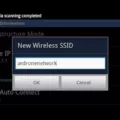
A smart home becomes a lot more enjoyable when one hub helps to keep all the lights, sensors, and locks in sync. If you’ve been considering getting a smart home hub, you are in the right place.
This article is a smart home hub buying guide that is focused on the choices that will actually help you from day to day. Modern IP-based standards typically bring wider compatibility and allow local control, and this leads to faster and much more private routines. Low power mesh networking helps to add range in corners that are tricky and also ensures battery devices do not need to be charged too often.
Local automations help to keep scenes running smoothly even if the internet blips, and this ensures that your morning and bedtime routines remain predictable. Multi-radio hubs that speak mesh and IP take care of mixed devices and cut down on “won’t pair” issues over time. With all of this in place, it becomes easier to pick the best smart home hub as you can match the features to your habits instead of just giving in to hype.
Interoperability continues to improve and the setup flow becomes much easier as more smart home hub updates roll out across different ecosystems. With a well detailed hub comparison guide like this one, you will be able to weigh protocol support, local control options, and update cadence so that you end up choosing the best one for your home.
What is a Smart Home Hub?

There are many things that can slow down a smart home, and some of them include cluttered apps and mismatched devices. A smart home hub acts like a single coordinator in your smart home by helping to keep sensors, switches, and bulbs in sync, and execute rules without constant screen time.
If you’re wondering or asking the question, what does a hub do? It includes a few essentials, such as discovering devices, grouping rooms, and firing scenes based on time, motion, or door events.
A home automation hub also goes further to act as a translator between different radios and standards, so that gadgets which are not Wi-Fi-based can still join schedules and routines. From a networking lens, the definition of an IoT hub includes bridging low-power meshes to the main IP network and helping to maintain local control even when the internet is shaky.
Strong hubs make sure that it is easy for devices to join and ensure that status updates feel as quick as possible. Mesh networking helps sensors in far bedrooms to reach the system through the use of nearby nodes, which helps to keep batteries happy and connections steady. As newer interoperability standards roll out, cross-brand control gets much easier, and more devices can run the same scenes without the need for custom workarounds.
A few thoughtful rules can go a long way. Motion can bring soft lights which are needed at night, while a contact sensor can pause a fan when a window opens. Start out with routines that take away any annoyances, and then layer in room groups and favorites that allow you to enjoy quicker control.
Types of Smart Home Hubs

The hub you choose plays an important role in determining how your devices communicate, schedule, and hand-off automation locally. A quick way you can map the landscape is to group smart hub types based on the wireless tech they run on and how they mesh together.
A ZigBee hub builds a low-power mesh that is perfect for bulbs, sensors, and switches, while keeping energy use down. And it can operate on 2.4GHz, with options for sub-GHz in newer revisions. A Z-Wave hub runs on sub-GHz frequencies that enable signals to travel through walls. A Bluetooth mesh hub helps to coordinate devices by managing flooding so that messages move across nodes easily without any complex routing tables.
A wireless automation bridge translates between different ecosystems so that older ZigBee or Z-Wave gear can appear in the newer control fabric without replacing any hardware. The range, power and interoperability are crucial in shaping everyday results. Mesh setups usually benefit from placement which is strategic and helps repeaters reach around corners and go through tight spots.
Sub-GHz links can feel much steadier in concrete-heavy buildings, while 2.4GHz meshes allow you to enjoy a broader device choice and much more flexible layout. Bluetooth mesh is able to fit in rooms which are filled with many small fixtures that need fast group commands such as lighting scenes and sensors which are working together.
Bridges give the best results in mixed homes where there are a few legacy plugs or contact sensors that still work well and do not deserve to go in the bin.
Top Smart Home Hubs in 2025
You can achieve good smart home control in 2025 by making use of hubs that unify devices, run routines on the box, and support the latest standards. Some of the most realistic shortlists for a proper smart home hub in 2025 include options that combine Matter control, Thread routing, and dependable ZigBee or Z-Wave coverage.
For a home centered on Galaxy phones, TVs, or appliances, Samsung SmartThings keeps the experience cohesive, with a new dedicated hub leaning into Matter, Thread, and Zigbee plus local-first execution, and with hub features also showing up inside select TVs and soundbars. The newest hardware moves away from Z-Wave to streamline device support around the standards that most new gear ships with. 

If you want to achieve a living room that functions as a smart home center, make use of Alexa Hub or the Echo Hub panel that you can mount on a wall or allow to sit on a shelf. To make your daily tasks feel natural, employ the use of built-in radios for ZigBee, Matter, and Thread.
Hubitat is usually the choice for power users who are more concerned about speed, privacy, and custom rules, since the Elevation C-8 Pro runs automation locally and supports ZigBee modern Z-Wave stacks.
Even if the clouds are congested, local scenes still fire, and flexible radios help to bridge older devices with new Matter gear under one rule’s engine. Recent updates to Matter have added categories such as big appliances and they have also layered in energy and water features, which transforms the hub into a single point of coordination for more rooms.
When it comes to your daily use, the automations should reach beyond lights and thermostats into activities that matter more to you, such as laundry, cooking, and resource tracking.
Compatibility & Ecosystem Considerations
Choosing a smart home hub should start with a clear look at compatibility. The best hub is one which understands the protocol that bulbs, locks, and sensors speak, such as Wi-Fi, ZigBee, Z-Wave, Thread, or the new Matter profile.
When it comes to making a decision, it often comes down to either Alexa, Google, or Apple Hub because each of these ecosystems layer in voice control and automation in addition to their own cloud services. Usually, their command phases differ, routines sync in different apps, and privacy rules vary.
So, if you want to mix different ecosystems, it means you have to combine multiple dashboards. Matter works towards fixing fragmented device interoperability and allows gadgets to join the network once and respond to any controller that supports the standard. Early results look very promising. Hubs that add Matter over Wi-Fi or Thread can onboard products a lot quicker and keep them available even when the internet drops or goes off.
Quite a number of shoppers overlook the long-term cost of ecosystem lock-in. Once a household purchases several proprietary sensors or cameras, changing the hub means that you either need to get a complete replacement or rely on cloud bridges that may add some delay. Making the setup future-proof calls for open standards, and firmware support commitments that were published by the vendor.
Cost & Setup of Smart Home Hubs

Considering radios, local control, and the scale of the home is the beginning of budget planning. The price of the smart hub increases with wireless stack additions such as Zigbee, Z-Wave, and Thread, plus the horsepower to run automations without the cloud.
Local execution reduces latency and makes sure that basic routines can continue operating when the internet experiences a hiccup. Matter support may also help to future-proof mixed ecosystems so that lights, sensors, and switches share a common language. 
Setup is no longer as slow as it used to be in the past. A complete smart hub setup typically consists of QR onboarding, multi-device provisioning, and even NFC tap-to-pair. Once paired, updating the firmware and performing a quick range test can help in identifying faulty links prior to building scenes. A central spot or Ethernet drop can stabilize traffic when adding many devices at once. 
A premium automation hub tends to have better rule editors and local scene storage. These features become more important as the room is being filled with sensors, shades, and multi-button remotes. Smaller spaces can benefit from a lightweight setup, but intensive scenes or occupancy logic do better with more powerful hardware. 
There are lots of homes that construct quality systems without the use of paid installers. A proper DIY smart hub installation is one that labels devices well, adds rooms in waves, and tests automations at breakfast and bedtime to weed out edge cases before they begin to frustrate users. Thread meshes may also rely on a border router function to bridge into Wi-Fi or Ethernet, which is frequently part of modern networks.
Do You Actually Need a Hub?

Your small setup can still run well without a central box as long as you have simple goals and a device mix that work very well together. A lot of lights, plugs, and sensors connect using Wi-Fi or Bluetooth, and they are able to handle basic automations with a phone or voice assistant.
If you’re trying to avoid extra hardware, there are a few smart home hub alternatives you can consider that still cover a lot of ground and keep things neat and tidy. There are many devices that connect directly, and they can be fast to set up. But whether you can depend on them long-term depends on their radio range, local control, and how the automation runs when the internet goes out.
Many households tend to prefer hubless smart home devices for a few reasons, which include a clean install and fewer points of failure. When it comes to close-range control, it has been noticed that Bluetooth shines, however a Bluetooth smart ecosystem can hit limits through walls or across floors.
Wi-Fi devices that communicate to the cloud make your remote control simple, however, direct-to-cloud devices rely on the internet and a vendor’s servers for rules, alerts, and history. On the flip side, mesh protocols designed for home automation often expect a coordinator that will help to route traffic, extend the range, and keep the battery sensors quiet until when they are required.
A dedicated hub can also take care of fast and local routines. Newer standards which have come out promise broader interoperability and much more local control so that mixed homes do not need a pile of bridges. In reality, a small apartment that has a handful of lights and sensors can stay hubless, while larger layouts, door sensors, and deeper automation will benefit more from a hub that brings everything together.
Conclusion
Everything comes together beautifully when all the protocols, rooms, and routines are planned as one. This concise smart home hub guide helps to turn scattered device choices into a system that responds fast and works well together.
When it comes to picking the best smart hub option, it all comes down to which one offers the best protocol support, local automation, and gives room for growth. Planning your smart home thoughtfully helps to reduce rework by aligning the sensors, switches, and scenes so that they are all on the same backbone.
Modern platforms typically make use of controllers and bridges so that mixed devices are able to share common automations. Designs that are local-first help to cut down delays and allow critical routines to keep running even if the internet drops or has issues. Over time, that foundation helps to create a connected living setup that brings a feeling of calm and predictability throughout the day.








